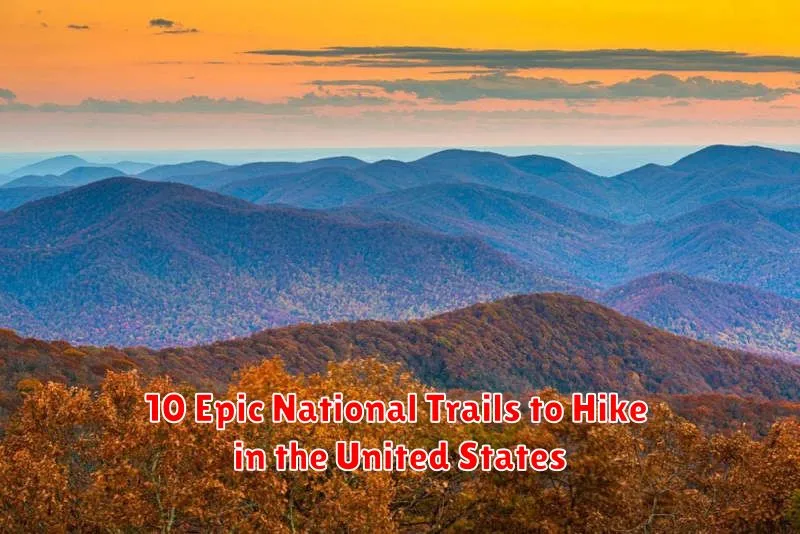The United States boasts a breathtaking array of natural landscapes, from towering mountain ranges to vast canyons and lush forests. For avid hikers and outdoor enthusiasts, the country’s National Trails System offers an unparalleled opportunity to experience these wonders firsthand. Embark on an unforgettable journey through some of the most epic national trails, traversing thousands of miles of diverse terrain and immersing yourself in the beauty of America’s wilderness. Discover the challenge and reward of long-distance hiking on these iconic trails, each offering a unique and unforgettable adventure.
This article presents ten epic national trails to hike in the United States, highlighting their unique characteristics and the remarkable experiences they offer. From the iconic Appalachian Trail to the rugged Pacific Crest Trail, explore these national scenic trails and discover the diverse landscapes, challenging terrain, and incredible sense of accomplishment that awaits. Whether you’re a seasoned thru-hiker or a weekend warrior, prepare to be inspired and discover your next great adventure on one of these epic hiking trails.
Appalachian Trail, East Coast
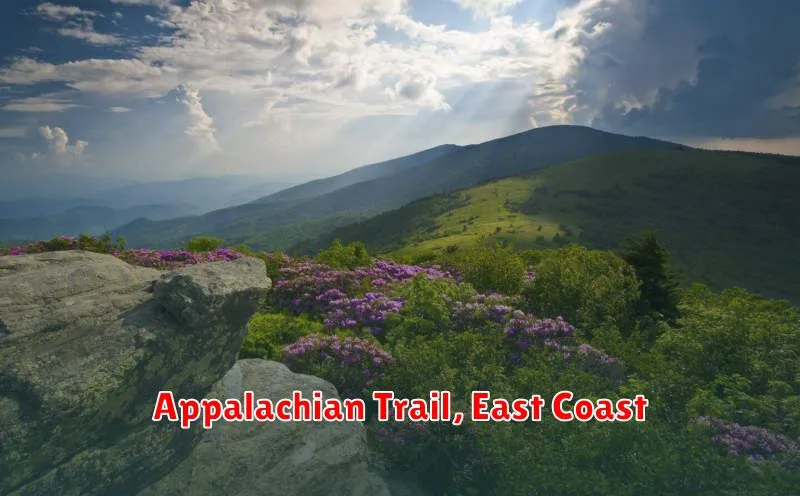
The Appalachian Trail, often called the AT, is a renowned hiking trail spanning approximately 2,200 miles from Springer Mountain in Georgia to Mount Katahdin in Maine. Traversing 14 states, this iconic trail offers a challenging but rewarding experience for hikers of all levels.
Known for its diverse terrain, the AT presents hikers with everything from gentle slopes to steep climbs, lush forests to rocky peaks. The scenic beauty along the trail is unparalleled, offering breathtaking views of the eastern United States.
Thru-hikers, those who complete the entire trail in one journey, typically take 5-7 months. Section hiking, completing smaller portions of the trail over multiple trips, is also a popular option.
Pacific Crest Trail, West Coast
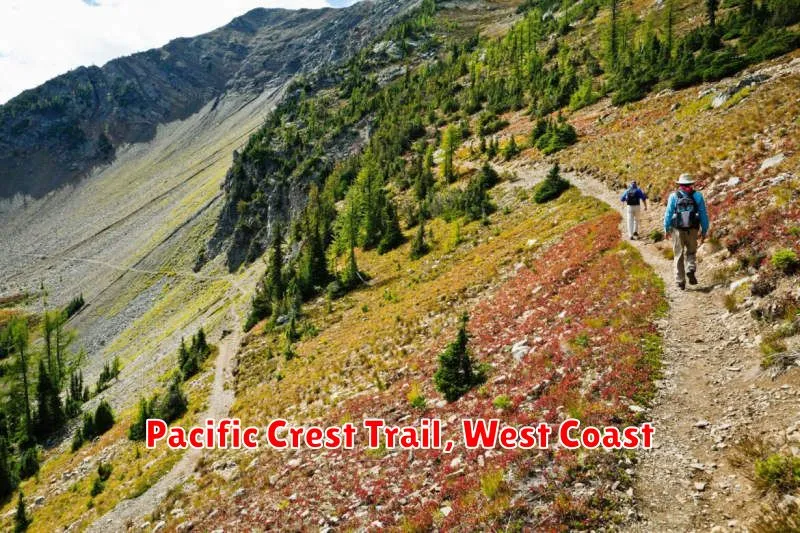
The Pacific Crest Trail (PCT) spans 2,650 miles from Mexico to Canada, traversing the magnificent landscapes of California, Oregon, and Washington. This iconic trail showcases the diverse beauty of the West Coast, from scorching deserts and snow-capped mountains to lush forests and volcanic landscapes.
Hikers experience dramatic elevation changes, challenging weather conditions, and breathtaking views. The PCT demands significant physical and mental endurance, typically requiring 5-6 months to complete.
Key features:
- Distance: 2,650 miles
- Elevation Gain: Considerable, with numerous high mountain passes
- Difficulty: Strenuous
- Typical Thru-Hike Season: April-October
Continental Divide Trail, Rockies
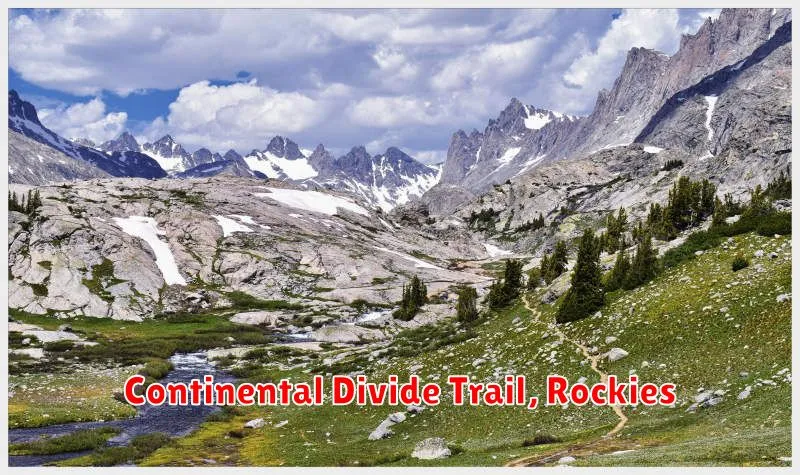
The Continental Divide Trail (CDT) is a challenging and remote trail spanning 3,100 miles along the Rocky Mountains. It stretches from Mexico to Canada, traversing five states: Montana, Idaho, Wyoming, Colorado, and New Mexico. This strenuous trek offers breathtaking views of diverse landscapes.
Hikers should be prepared for high elevations, ranging from 4,000 to over 14,000 feet. Variable weather conditions are a significant factor, with snow possible even during summer months. Navigation skills are essential due to the trail’s undeveloped sections.
The CDT is a truly immersive experience, offering solitude and a deep connection with nature. It’s considered the most challenging of the three major US long-distance hiking trails.
Florida Trail, Florida
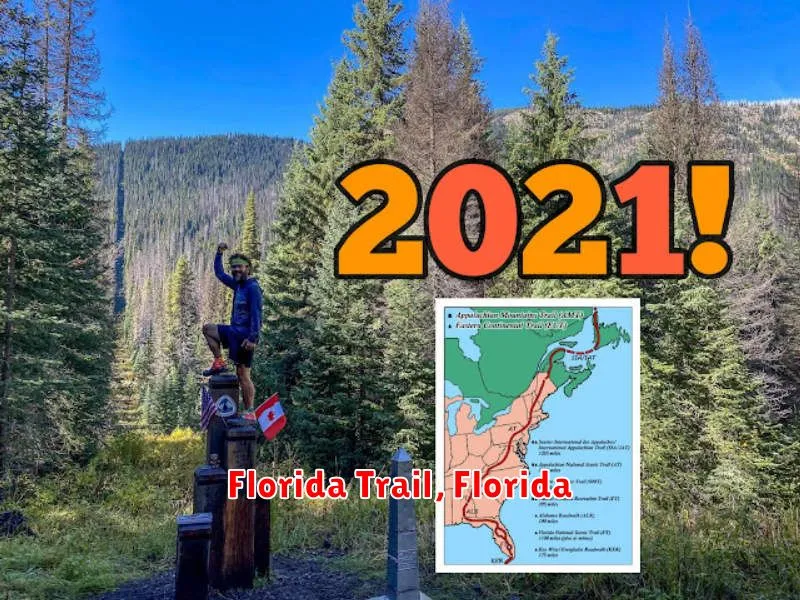
The Florida Trail offers a unique hiking experience, traversing a diverse range of ecosystems from the panhandle to the Everglades. Spanning approximately 1,500 miles, this National Scenic Trail presents a significant challenge for thru-hikers, demanding adaptability to varying terrain and weather conditions.
While shorter sections cater to day hikers and weekend backpackers, the complete trail unveils Florida’s natural beauty in its entirety. Hikers can expect to encounter lush forests, grassy savannas, and coastal marshes, providing ample opportunities for wildlife viewing. Be prepared for humid conditions, particularly during the summer months.
Arizona Trail, Arizona
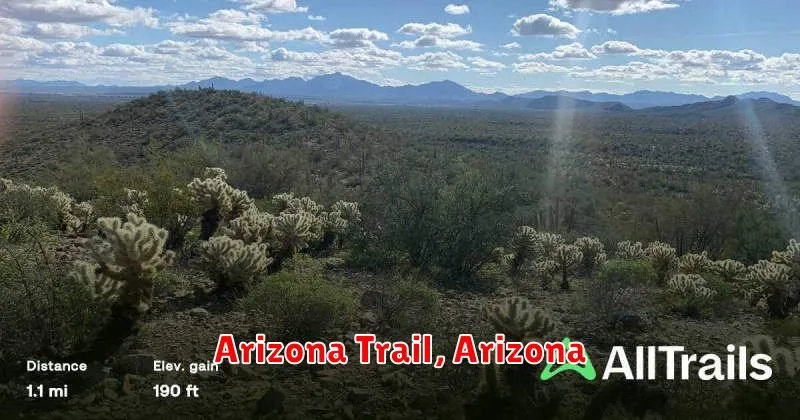
Spanning 800 miles from Mexico to Utah, the Arizona Trail showcases the state’s diverse landscapes. Hikers experience everything from desert canyons to alpine forests, encountering a wide range of flora and fauna.
Key features of this trail include the Grand Canyon, numerous mountain ranges, and sections traversing Native American lands.
The trail offers a challenging but rewarding experience for seasoned hikers looking for a truly epic adventure.
North Country Trail, Midwest to East
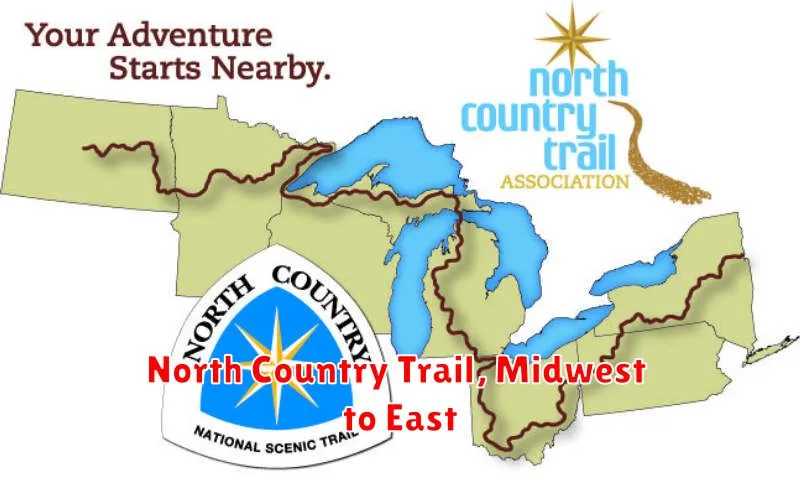
The North Country Trail (NCT) offers a challenging and diverse hiking experience, stretching over 4,800 miles through eight states from North Dakota to Vermont. Winding through forests, alongside lakeshores, and over mountains, the NCT provides a journey through the heart of the northern Midwest and East.
Hikers can experience a range of terrains and ecosystems, from the vast prairies of North Dakota to the rugged Adirondack Mountains. The NCT is renowned for its remote sections and opportunities for solitude.
While the entire trail is yet to be completed, significant portions are open for hiking, offering numerous access points for both short trips and extended backpacking adventures. This makes it an appealing choice for those seeking a truly immersive backcountry experience.
Ice Age Trail, Wisconsin
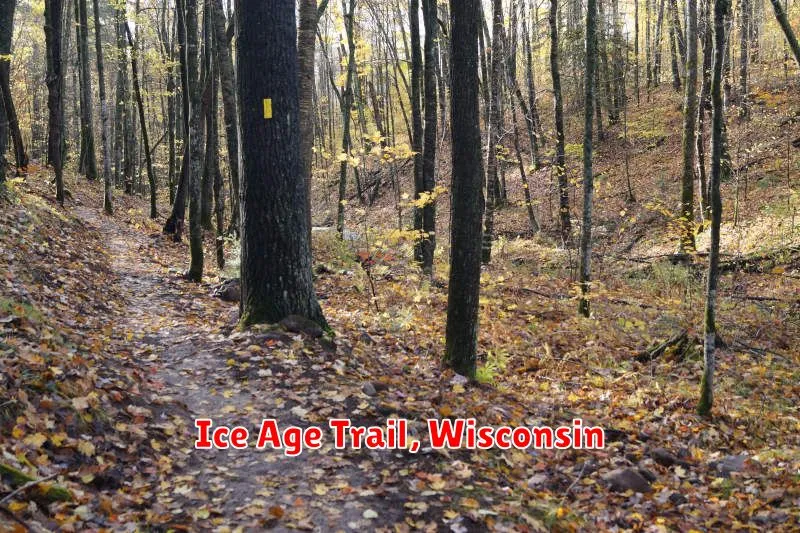
The Ice Age National Scenic Trail offers a unique hiking experience, tracing the edge of the last glacier in Wisconsin. Spanning over 1,200 miles, this nationally recognized trail traverses through diverse terrain, from glacial moraines and eskers to forests and prairies.
Hikers can choose to complete the entire trail as a thru-hike, or enjoy shorter sections. The trail offers a variety of experiences for all skill levels, with some portions suitable for families and others presenting more challenging terrain. Backpacking is popular for those tackling longer sections, while day trips are ideal for exploring specific features like kettles and kames.
The Ice Age Trail provides a window into Wisconsin’s glacial history, offering stunning views and the opportunity to encounter unique flora and fauna.
New England Trail, CT to MA

The New England Trail (NET) offers a 215-mile journey through Connecticut and Massachusetts. This challenging trail traverses a variety of terrains, from the rolling hills of Connecticut to the rugged mountains of Massachusetts.
Hikers can experience a range of scenic landscapes including forests, rivers, and waterfalls. Established in 2009, the NET is the newest of the National Scenic Trails and offers a less crowded experience compared to some of the more popular trails.
While shorter than other national scenic trails, the NET still presents a significant challenge requiring careful planning and preparation.
Natchez Trace Trail, Mississippi
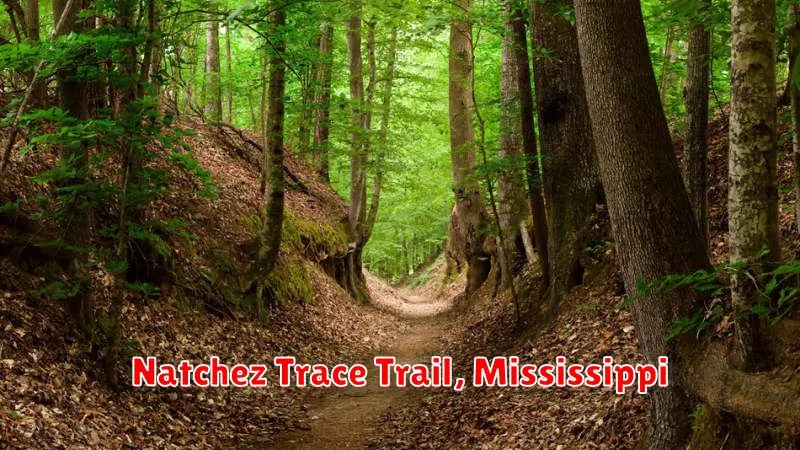
The Natchez Trace Trail offers a unique journey through history and nature. Spanning 444 miles, this non-motorized pathway follows the ancient “Old Natchez Trace,” a route used for centuries by Native Americans, European settlers, and traders. While not strictly a hiking trail in its entirety, it offers exceptional hiking opportunities along designated sections.
Experience the rich history of the trail, passing by significant landmarks and archaeological sites. The scenic beauty of the Natchez Trace Parkway, which runs alongside much of the trail, is unmatched, featuring lush forests, rolling hills, and breathtaking overlooks.
The Natchez Trace Trail provides opportunities for hiking, horseback riding, and biking. Visitors can choose to explore short segments or embark on multi-day adventures, immersing themselves in the tranquility and historical significance of this remarkable trail.
Potomac Heritage National Scenic Trail, Mid-Atlantic
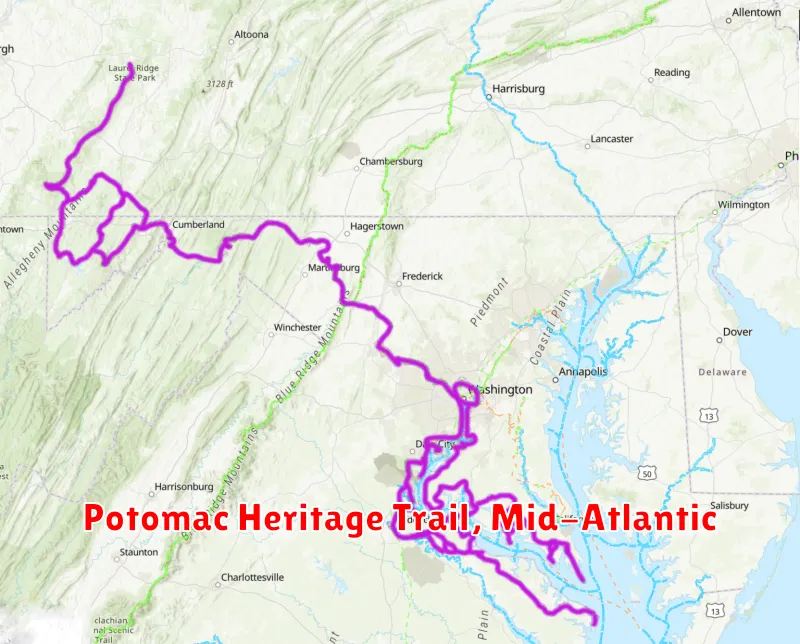
The Potomac Heritage National Scenic Trail offers a diverse experience, weaving through historical landmarks and natural beauty in the Mid-Atlantic region. Spanning approximately 700 miles, the trail network encompasses portions of Maryland, Virginia, Pennsylvania, the District of Columbia, and West Virginia.
Hikers can explore varied terrain, from the fall line of the Potomac River to the mountainous landscapes of the Allegheny Plateau. The trail highlights the history of the Potomac River and the cultures that shaped the region, offering a glimpse into Native American heritage and colonial settlements.
Sections of the trail feature challenging climbs and rugged terrain, while others provide gentle paths suited for leisure hiking. The experience emphasizes the interconnectedness of natural, cultural, and historical resources.

